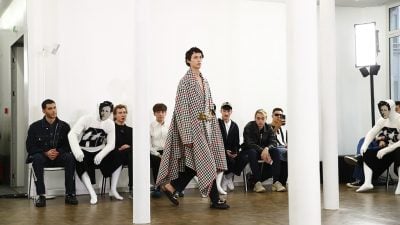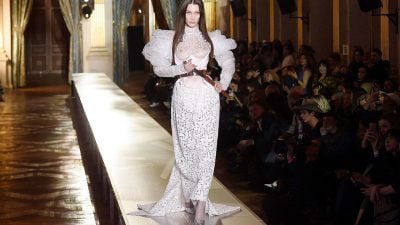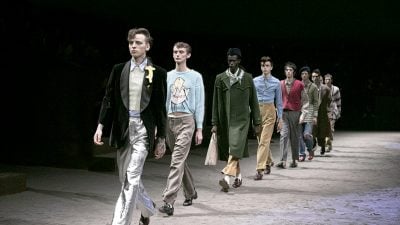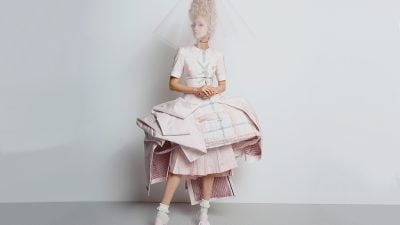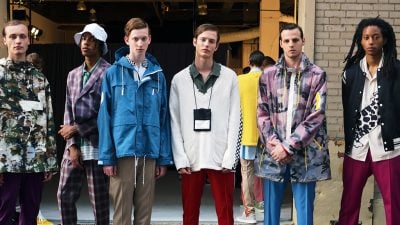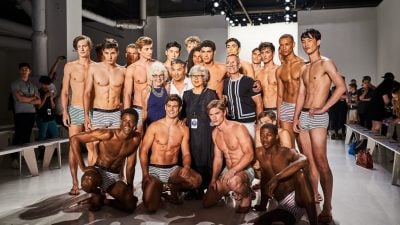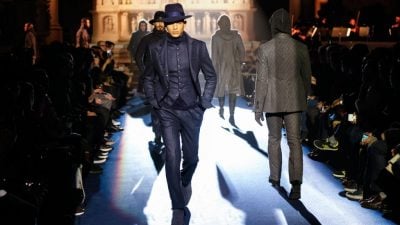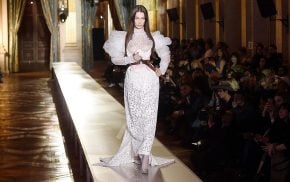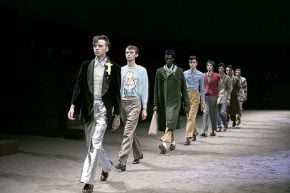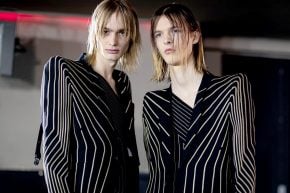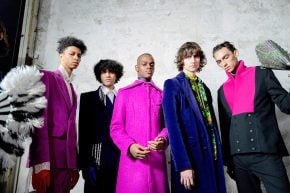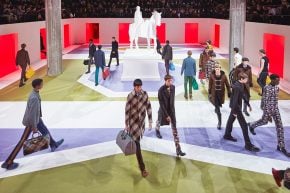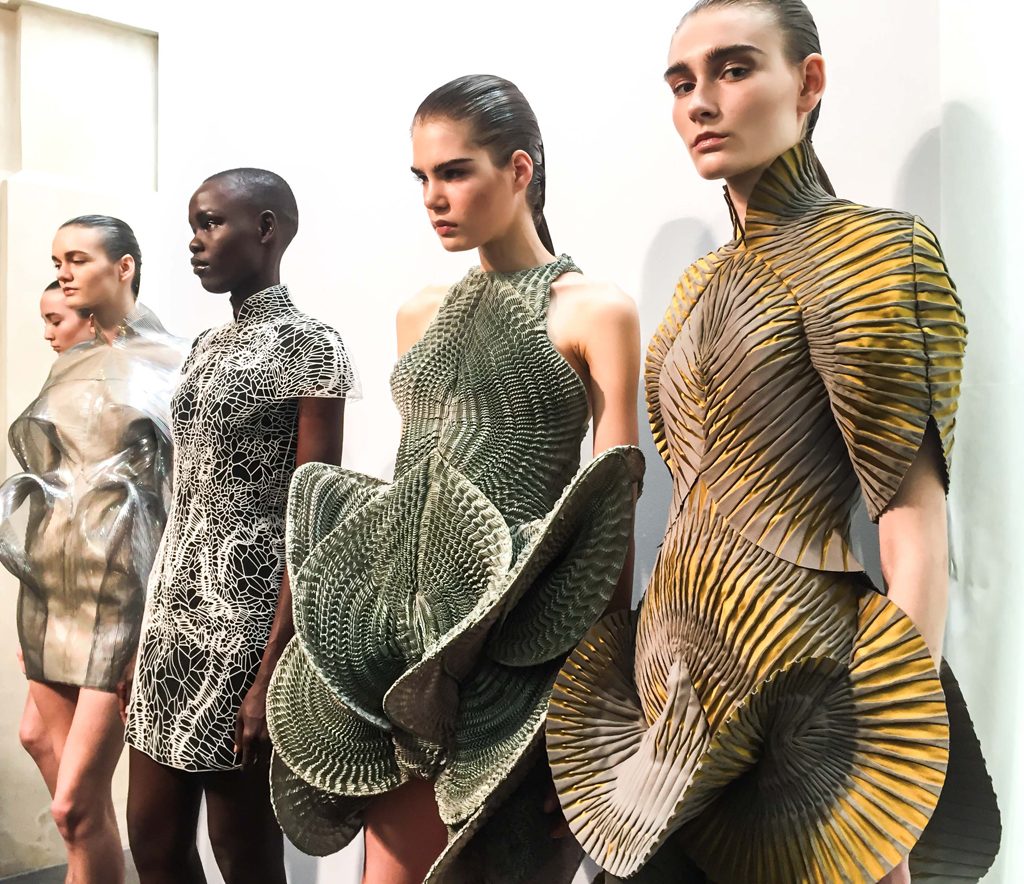
Dutch Designer Iris Van Herpen is Transforming Fashion
Designer Iris Van Herpen has covered an astonishing amount of ground since debuting her first collection in 2007. For her part, van Herpen is obsessed with materials and the process of creating and has devoted herself to mastering the laborious hand crafted techniques of her intricately crafted couture dresses. The majority of which she executes herself. This abiding obsession to capture and create with new materials has driven her to experiment with an impressive array of new developing technologies. Van Herpen created her first 3D-printed piece for the runway in 2007, and since that time has gone on to execute infinitely more elaborate pieces each season, including the 3D-printed “ice dress” seen in her fall 2014 collection, titled Magnetic Motion. The intellectually minded van Herpen has a voracious appetite for new materials and holds herself to very high exacting standards, which, when applied to some of the leading experimental technologies, have yielded extraordinary results. Her work itself is wildly creative, and is a visual feast for artists, fashion lovers, and aesthetes around the world. Beginning with her earliest collection, which attempted to emulate refinery smoke via a voluminous shoulder and skirt ensemble crafted of metal mesh, to the stunningly intricate leather detailing of her 2010 Synesthesia collection, or the playful sculptural shape of her frozen ice “water dress” resembling a frozen sculpture of water molded out of transparent PETG . Van Herpen’s work demonstrates a deep fascination with natural and manmade materials, and a desire to translate those elements quite literally into fashion. Her work is worth paying attention to. Digital technology is already shaping the industry, whether you’re talking about digitally printed fabric or 3-D printed shoes. It’ll only grow more prominent in the years to come. It will be interesting to watch Iris van Herpen continue her work, perhaps literally, to blaze a trail that crosses the line between fashion and art. Experience Iris van Herpen’s “Transforming Fashion” Exhibition at the Dallas Museum of Art, May 21 – Aug 20, 2017.
Between the Lines 2017
“Between the Lines” explores the imperfections of systems and structures in both the physical and digital worlds. Iris Van Herpen focuses on the gaps in between the structures by creating patterns that trick the eye’s perspective and challenge us to “mind the system, but to find the gaps”. The designer brought her designs to life using soft 3D hand-cast PU fabrics that were hand-painted and injection molded. Van Herpen collaborated with architect Phillip Beesely to create fine expandable laser-cut Mylar fabrics that are reminiscent of digital glitches.
Lucid 2016
For her collection titled “Lucid” van Herpen explores the concepts of both reality and conscious dreaming. Her lucid garments presented in the collection are made from transparent hexagonal laser-cut elements connected with translucent flexible tubes that create a glistering bubble-like exoskeleton around the model’s body. The shimmering silhouettes of the phantom dresses are created with a super light tulle with iridescent stripes fused onto it. The collection features two 3D printed Magma dresses that combine flexible TPU printing and polyamide printing to create a web of fine lace. Van Herpen collaborated with Finsk to create the AERO shoe made from wood, and laser-cut leather on top of an ultra-thin transparent acrylic heel.
Magnetic Motion 2015
Iris van Herpen visit to the Large Hadron Collider in CERN provided the inspiration to explore the representation of dynamic forces of attraction and repulsion. “I find beauty in the continual shaping of chaos which clearly embodies the primordial power of nature’s performance,” says Van Herpen. She brought together Philip Beesley’s pioneering work in responsive ‘living’ sculptures, and artist and craftsman Jolan van der Wiel, whose work with magnetic tension has resulted in dynamic sculptures and installations that bring to mind the power of volcanic eruptions. Techniques like injection molding and laser cutting were used on maze like structures, 3D-printing and intricate architectural handwork on dresses, jackets, trousers, skirts and blouses giving them dynamic shapes and surfaces that echo the body’s movement.
Capriole Couture 2011
In her debut collection titled “Capriole” at the Fall 2011 Paris Couture shows, the designer featured 5 new creations as well as collector’s pieces from her previous collections. Van Herpen collaborated with architect Isaie Bloch and MGX to make 3D prints that were mixed with fabric materials resulting in highly architectural looks. A snake dress made of black acrylic sheets is meant to represent the chaotic mental state at the moment before a jump (van Herpen is a avid skydiver.) The “Skeleton Dress” was created using the SLS process in polyamide.
Radiation Invasion 2009
Iris van Herpen’s Spring 2011 collection “Radiation Invasion” is based on the electronic invisible waves that constantly surround us. The pieces in this collection represent how it would look if in the future we found a way for our bodies to attract and repel radiation waves around us like living magnets. Van Herpen manipulated leather into sophisticated wave patterns flowing from small to wide to suggest intensive movement. All of the pieces in the collection are made from ‘ECCO’ leather with a porcelain treatment. Van Herpen worked with Bart Hess to develop the high-tech fabrics featured throughout the collection.
Chemical Crows 2008
“Chemical Crows” is inspired by Van Herpen’s fascination with the dark practices of alchemists and the secret knowledge of a group of crows living around her Amsterdam studio. The quest of alchemists to transform all metals into gold gave Van Herpen the idea of morphing mysterious crows into gold by manipulating the reality of material control. The collection is handcrafted from thousands of brass ribs. Thousands of meters of yarn and leather were woven into patterns that translate the movement of the crow’s feathers into a different material. Following in the steps of the alchemists, Van Herpen tried to take materials out of their original context to gain control.
Footwear of the Future
Iris Van Herpen’s wildly creative imaginative shoes are unique one-of-a-kind works art. Her sculptural shoes are created using the very latest developing technologies such as 3D printing to construct unimaginable designs and textures. For her “Magnetic Motion” collection, Van Herpen collaborated with Dutch designer Jolan van der Wiel to design a spiky shoe made entirely of magnets. The killer spiky shoes were created by combining resin with iron fillings and then using strong magnets to pull small portions into spikes across the surface. The futuristic footwear in her “ Lucid” collection featured wedges built on stilts to create the illusion of the wearer being suspended in air. The wedge of the shoe was constructed using transparent plexiglass, with laser cut leather in geometric patterns that matched the elaborate organic shaped garments in the collection. In designing shoes for “Hacking Infinity,” Van Herpen spent 6 months with Japanese designer Noritaka Tatehana to create a series of 3D printed shoes that focused on clustered crystals. The heel-less platforms were designed in CAD software and then manufactured using the latest 3D printing technologies. Van Herpen has also created several shoes in collaboration with Dutch designer footwear brand United Nude, including haircalf leather Fang shoes with with 10 heels protruding from the sole of each shoe and Crystallization leather heels with silver chains.

